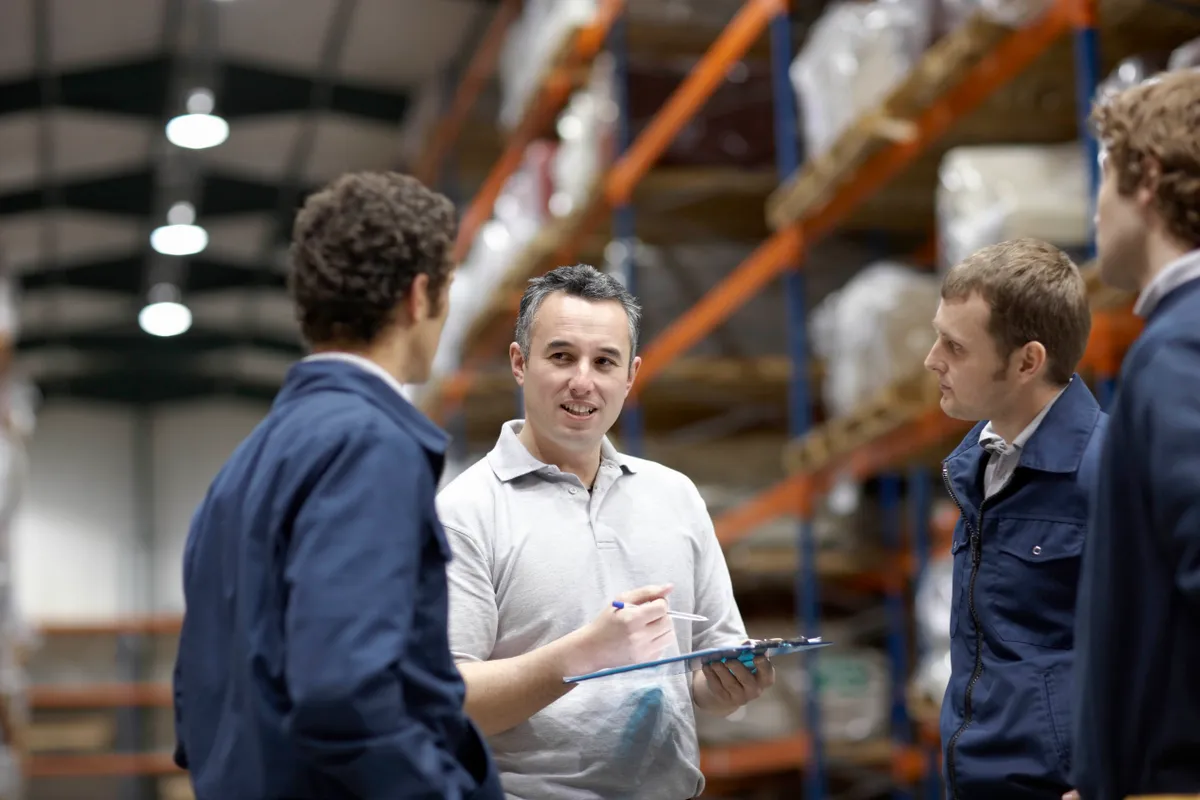
Identifying opportunities to help decarbonise the packaging industry
1 March 2024 | 5 minutes
Find out more from Jodie Eaton, Shell Energy UK's CEO, as she examines the complexities of decarbonising the diverse packaging sector.
Optimising operational energy efficiency remains high on the agenda for major energy users. After all, with energy prices remaining volatile1, businesses are increasingly looking towards solutions to drive down costs, reduce overheads and stay competitive and the packaging industry is no exception. Major energy users are scrutinised by regulators, government bodies, customers and shareholders. It is now nearly two years since it became mandatory for more than 1,300 of the largest UK-registered businesses to disclose climate-related financial information, aligned with the UK Government’s drive to reach net-zero by 20502. The disclosure regime was endorsed by 60% of global businesses and have helped to frame decarbonisation strategies among some of the UK’s largest companies.3 It is important to remember that the packaging industry covers many of the most intensive energy users, including pulp and paper, plastics, metals and glass producers4. The industry is a significant employer and a major economic contributor. According to The Packaging Federation, the sector’s annual sales exceed £14 billion, with 85,000 people employed across numerous roles – representing 3% of the UK’s entire manufacturing workforce5, and there is further growth in the pipeline. So, when it comes to decarbonisation, there is significant complexity involved. Innovate UK highlights that the overall impact of packaging on the environment is influenced by factors, ranging from material choices and their supply chains through to recycling and refillable containers6. However, some aspects of decarbonisation require behavioural change by consumers, from making more sustainable purchasing choices to embracing best practice recycling7. When it comes to manufacturing, technological advances including hydrogen-powered or electric arc furnaces are helping to mitigate the impact of carbon-intensive processes. For instance, ArcelorMittal, a customer of Shell Energy in Spain, set aside €67m in funding last year to invest in an electric furnace for steelmaking8, and Encirc has announced plans to develop a ultra-low carbon hydrogen-powered glass furnace at its UK site in Cheshire. The routes being taken vary from industry to industry, with glass, plastics, paper and metal all embarking on subtly different routes to decarbonisation.
Targeted initiatives
The Food & Drink Federation recently called on its members to explore flexibility as an option to manage energy costs, claiming that many businesses had now reached the limit of passing inflationary pressures on, having found energy efficiencies where possible, and cutting other costs, including limiting product ranges, R&D and advertising. In October, it encouraged members to participate in the Demand Flexibility Service (DFS) that allows them to earn money for shifting electricity usage outside peak demand hours, enabling the Electricity System Operator (ESO) to manage supply through periods when margins are tight.10 Meanwhile, the International Energy Agency has identified paper production as another sector with high heat and water demand, putting it among the top five energy-intensive industries globally accounting for approximately 6% of global industrial energy use and 2% of direct industrial CO2 emissions. Research reveals that it represents 6% of greenhouse gas emissions from UK industries and 7% of the total heat consumption.11 Paper production is heat-intensive, because of the large amounts of water that need to be evaporated in drying pulp and paper. Innovations to reduce the amount of water to be evaporated, as well as higher on-site waste heat recovery and co-generation, can increase energy efficiency and reduce emissions. Innovative uses of heat pumps are being explored to reuse the latent heat from paper drying to produce steam for drying.12

Clarity on net zero commitment
With glass manufacturing also facing the challenge of how to decarbonise heat, the trade organisation British Glass is considering its next steps on the journey to net-zero emissions by 2050. Its strategy includes increasing the energy efficiency of furnaces by 50% and maximising the recycled content of glass packaging, while also furthering investment in waste heat recovery. By working towards these goals, members have already reduced their CO2 and improved their resource efficiency. The trade association is also exploring electrification (powered 80% by renewables, plus 20% gas) and alternative fuels such as hydrogen to power furnaces. 14 The establishment of the Glass Futures Global Centre of Excellence in St Helens will feature a unique experimental furnace and other technology to investigate ways of producing carbon neutral glass.15 Learning from the facility could help decarbonise other energy-intensive industries.
The toughest challenge
Steel is used to pack more than 1,500 food and drink items, such as canned soup and biscuit tins, as well as paint, health and beauty products like deodorant and shaving cream aerosol cans, and various household items. The steel packaging recycling rate has reached over 90% in some countries, and steel is Europe’s most recycled packaging material.16
However, processing and recycling steel is carbon and energy intensive.17 The International Energy Agency (IEA) predicts that iron and steel will be one of the last sectors to still use coal in 2050, due to its role as a reducing agent. However, technologies including carbon capture and hydrogen-based production are being explored, with a view to developing at scale in the longer term.18 Considerable progress has been made across the sector to lower emissions over the past decade, including the deployment of low-emission heating technologies, such as industrial heat pumps, and other energy efficiency measures. Examples of this include SSAB’s steel plant in Oxelosund, which has significantly cut its CO2 emissions through the use of heat pump technology.19 However, the IEA sets out that efforts must accelerate to get on track with the Net Zero Emissions by 2050 (NZE) Scenario, where emissions decline by 6% per year to 2030, compared to 1.6% on average over the past decade.20

A collaborative approach
When it comes to finding efficiencies and reducing carbon, the packaging industry faces many challenges. Working in partnership with suppliers such as Shell Energy can bring fresh insight to help deliver the progress needed. Packaging industries can benefit hugely from being able to better understand the potential return on investment of the different routes available. Technological advances are often in their infancy and businesses are keen to establish what their short, medium and long-term choices are and how they can be financed in a way that will ensure solutions are commercially viable and more sustainable.
The road ahead
The packaging industry's journey towards sustainability is progressing but it is a complex challenge that requires the collective effort of manufacturers, retailers, consumers, and policy makers. Shell Energy is able to draw on global expertise and capability to support energy intensive manufacturers in the packaging sector as they look for effective ways to navigate the changes ahead.
View our online content disclaimer.
2UK to enshrine mandatory climate disclosures for largest companies in law - GOV.UK (www.gov.uk)
3https://www2.deloitte.com/uk/en/focus/climate-change/tcfd.html
5http://www.packagingfedn.co.uk/
8https://corporate.arcelormittal.com/about
9https://www.packaging-gateway.com/projects/encircs-hydrogen-furnace/?cf-view
11 https://www.sciencedirect.com/science/article/pii/S1364032122005950
14https://www.britglass.org.uk/sites/default/files/British%20Glass%20-%20Net%20Zero%20Strategy.pdf
15https://www.liverpoolcityregion-ca.gov.uk/news/54-million-glass-futures-facility-opens-in-st-helens
16 Steel packaging - worldsteel.org
17committees.parliament.uk/writtenevidence/14920/html/
18https://www.iea.org/energy-system/industry/steel
19 https://www.diva-portal.org/smash/get/diva2:974632/FULLTEXT01.pdf
Related articles


